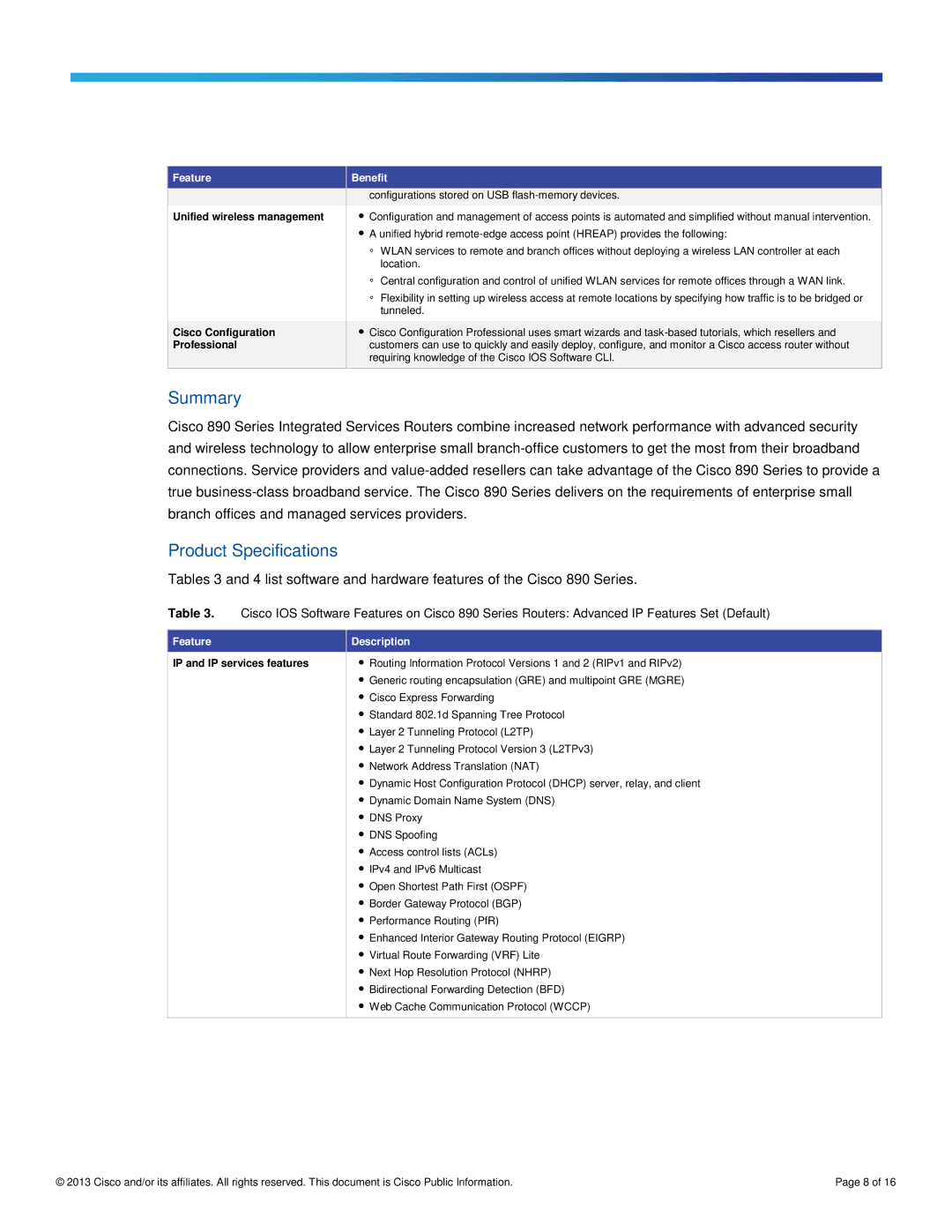
Feature | Benefit |
| configurations stored on USB |
| |
Unified wireless management | ● Configuration and management of access points is automated and simplified without manual intervention. |
| ● A unified hybrid |
| WLAN services to remote and branch offices without deploying a wireless LAN controller at each |
| location. |
| Central configuration and control of unified WLAN services for remote offices through a WAN link. |
| ◦ Flexibility in setting up wireless access at remote locations by specifying how traffic is to be bridged or |
| tunneled. |
|
|
Cisco Configuration | ● Cisco Configuration Professional uses smart wizards and |
Professional | customers can use to quickly and easily deploy, configure, and monitor a Cisco access router without |
| requiring knowledge of the Cisco IOS Software CLI. |
| |
|
|
Summary
Cisco 890 Series Integrated Services Routers combine increased network performance with advanced security and wireless technology to allow enterprise small
Product Specifications
Tables 3 and 4 list software and hardware features of the Cisco 890 Series.
Table 3. | Cisco IOS Software Features on Cisco 890 Series Routers: Advanced IP Features Set (Default) | |
|
|
|
Feature |
| Description |
|
| |
IP and IP services features | ● Routing Information Protocol Versions 1 and 2 (RIPv1 and RIPv2) | |
|
| ● Generic routing encapsulation (GRE) and multipoint GRE (MGRE) |
|
| ● Cisco Express Forwarding |
|
| ● Standard 802.1d Spanning Tree Protocol |
|
| ● Layer 2 Tunneling Protocol (L2TP) |
|
| ● Layer 2 Tunneling Protocol Version 3 (L2TPv3) |
|
| ● Network Address Translation (NAT) |
|
| ● Dynamic Host Configuration Protocol (DHCP) server, relay, and client |
|
| ● Dynamic Domain Name System (DNS) |
|
| ● DNS Proxy |
|
| ● DNS Spoofing |
|
| ● Access control lists (ACLs) |
|
| ● IPv4 and IPv6 Multicast |
|
| ● Open Shortest Path First (OSPF) |
|
| ● Border Gateway Protocol (BGP) |
|
| ● Performance Routing (PfR) |
|
| ● Enhanced Interior Gateway Routing Protocol (EIGRP) |
|
| ● Virtual Route Forwarding (VRF) Lite |
|
| ● Next Hop Resolution Protocol (NHRP) |
|
| ● Bidirectional Forwarding Detection (BFD) |
|
| ● Web Cache Communication Protocol (WCCP) |
© 2013 Cisco and/or its affiliates. All rights reserved. This document is Cisco Public Information. | Page 8 of 16 |
